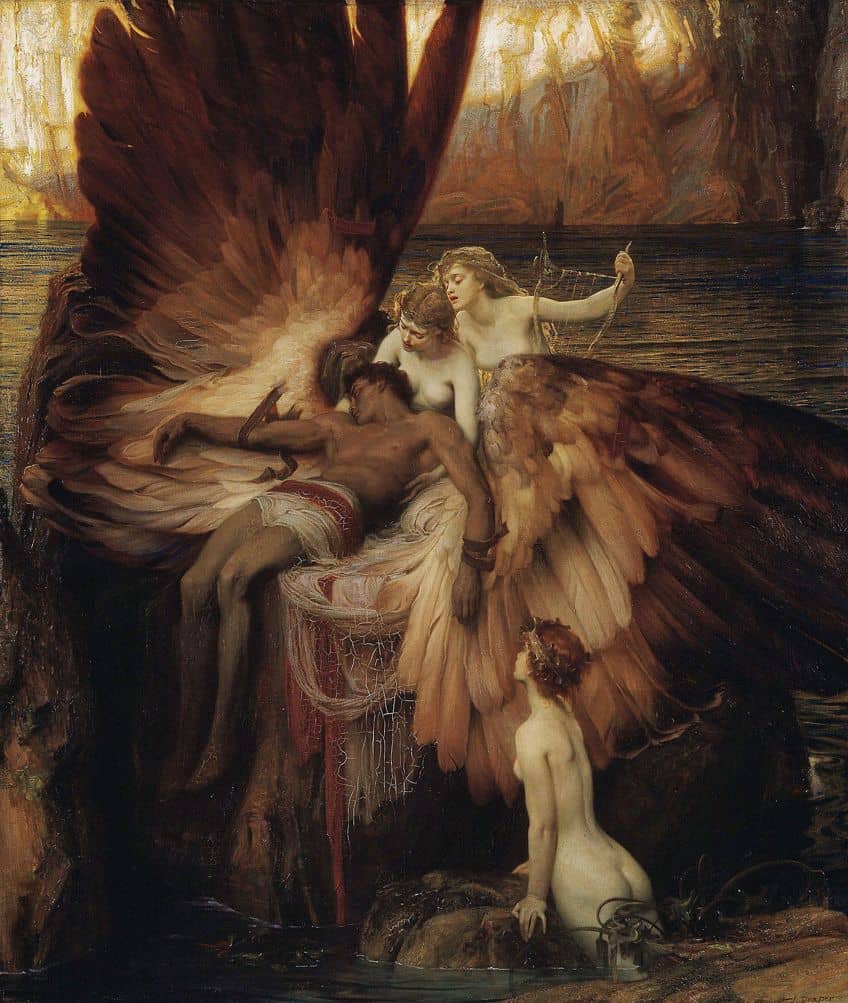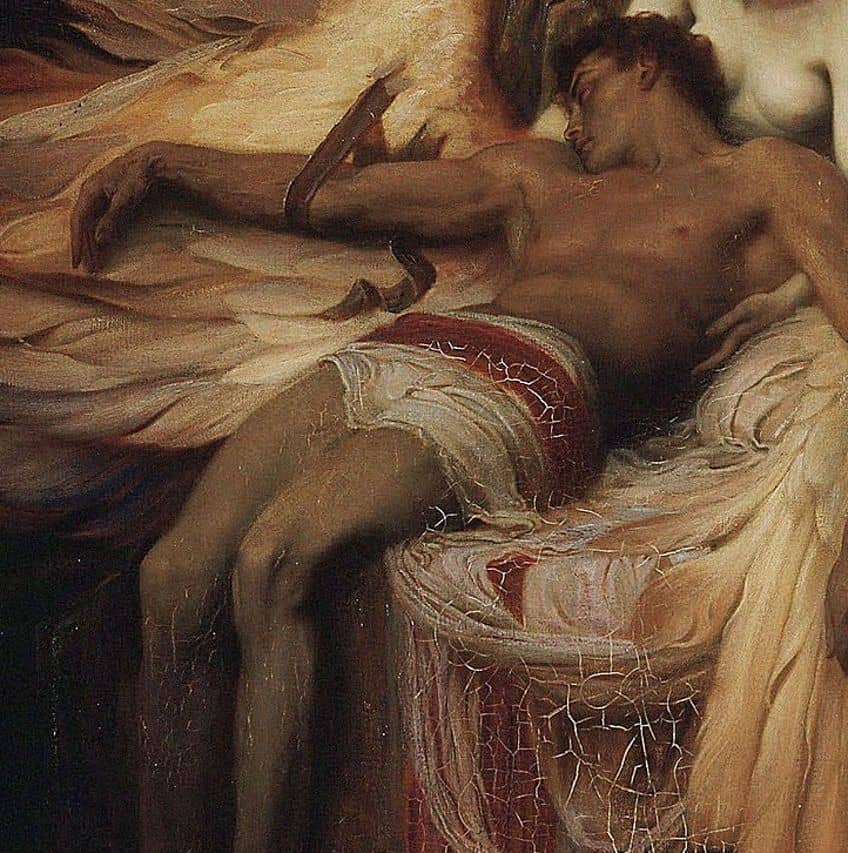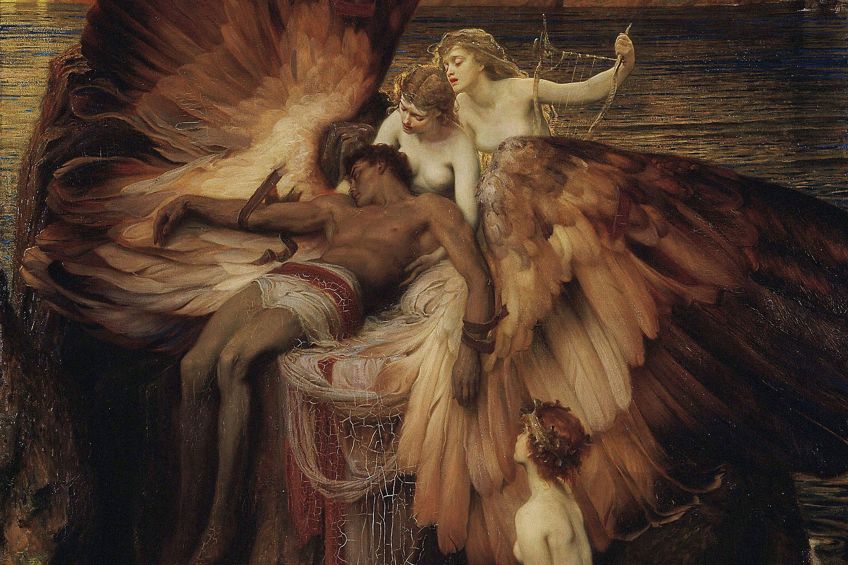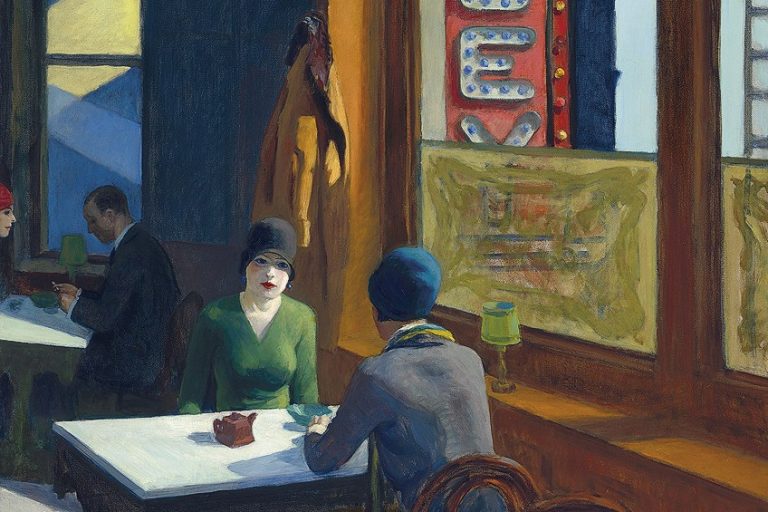“The Lament for Icarus” by Herbert James Draper – An Analysis
The Lament for Icarus by Herbert James Draper is one of the most famous 19th-century paintings that was recognized as the best rendition of the Greek mythological figure. It not only encompasses the artist’s unique perspective on the subject, but also reflects the stylistic shift in representing such a theme in the late Victorian period. In this article, we will dive into all you need to know about this famous Icarus painting and the seemingly sentimental and sensuous rendering of his figure that makes the painting so famous. Keep reading for more about this famous Draper artwork!
The Art of Herbert James Draper
Born in 1863, Herbert James Draper was among the leading painters of the Neoclassical era, whose contribution to the Victorian age of painting was at its peak in the 1890s. Draper’s main subjects revolved around his interest in ancient Greek subjects and mythological narratives. His most praised specialty was the way that he depicted the human figure, whether male or female, that was always elegant, refined, and sensuous. Draper’s draftsmanship was incredibly meticulous and almost seductive in his depictions of nudity.

Among the most well-known examples of his nude works include The Water Nixie (1908) and The Kelpie (1913). Towards the more mature period of his career, the public taste for mythological subjects declined, leading Draper to opt for a more conventional genre such as portraiture. Since 1890, he had been an active participant in the Royal Academy’s annual expositions, however, his membership was continuously overlooked for many years. During Draper’s later career, his popularity steadily declined with only traces of his influence seeing a revival much later.
The Lament for Icarus by Herbert James Draper: An Analysis
| Date | 1898 |
| Medium | Oil on canvas |
| Dimensions (cm) | 180 x 150 |
| Where It Is Housed | Tate Britain, London, United Kingdom |
Despite the drop in his popularity, The Lament for Icarus by Herbert James Draper remained one of the best depictions of a Greek myth since its creation. If one browses through the works of Herbert James Draper, one will instantly recognize and become charmed by the elegant and gentle appeal of his painting style. His eye for creating almost photographic snapshots of ancient Greek nymphs and other mythological beings was unrivaled.
An evident theme in many of his works is his representation of the nude female form, which reflected themes of innocence, coyness, an intimacy between viewer and subject, as well as idyllic settings that would immerse the viewer into a completely different reality. It is as though Draper had access to imagined Greek worlds that enabled him to represent these figures in such an accessible and intimate way.
In The Lament for Icarus, one witnesses the scene of the Greek mythological figure Icarus, who appears dead in the painting, as a winged creature, among a group of nymphs, who mourn over his body.

According to Greek mythology, Icarus was the son of the Cretan architect Daedalus, who was imprisoned along with Icarus for allegedly revealing the secrets of the labyrinth of Crete. The two were kept away in a high location such as a tower and escaped using makeshift wings that Daedalus created from a combination of beeswax, feathers, threads, clothes, and blankets.
Despite a warning from his father not to fly too close to the sun, Icarus, unfortunately, did not avoid doing so and ended up plummeting to the ground after the beeswax melted. In alternative versions of the narrative, the two escaped using a ship, however, in Draper’s painting, one sees that Icarus is lifeless at the scene, among a group of unknown nymphs, who cling to his corpse and mourn him.
Representing Icarus in Art
Many paintings from the Renaissance included Icarus as the main subject matter, which aided in the popularity of the narrative and the famous statement you might still hear today “Do not get too close to the sun. The ancient Greek myth also had a significant influence on English literature best captured across the literary contributions of figures like William Shakespeare and John Milton. The representation of Icarus in Renaissance art, for example, was associated with different, yet very specific contexts.
These ranged from representing the character among some body of water or as a symbol of high ambition.
The Lament for Icarus represents the character in a slightly different ending, such that his wings are retained for the composition, to add a more romantic element to a death scene. This romanticization of death and the end of Icarus’ life was complemented by a group of sea nymphs, which reference the sea, however, the warm palette that extends over the painting reminds one of a setting sun.

After Icarus experienced the height of his fascination and high ambition, his descent and embrace by the nymphs in the light of the setting sun is what makes his story particularly tragic in this painting and brings a mood of “final endings” and “end of the day” type of feeling to the viewer. The lamentation of the Greek being is illustrated by one of the nymphs above Icarus’ head who plays a stringed instrument and the expression of pity and grief on the face of the nymph who holds Icarus in her lap.
Color and Illumination in The Lament for Icarus
Draper’s use of warm-toned colors throughout the painting makes this one of his most unique and recognizable paintings. While many of his works portray his subjects in a gentle light, during the best moments of the day when romantic and sensuous appeal is at its peak, The Lament for Icarus provides a completely different atmosphere using color.
Draper was successful in expressing grief and a sense of finality by choosing to represent Icarus’ fall.
Before this painting, another 19th-century artist named Frederic Leighton also represented Icarus in a painting, however, chose to depict his preparation scene for taking flight. Draper’s stunning display of brown, golden, nude, and other varying hues in between was well executed and clever since his rendition of the wings, as not completely lifeless but in the last seconds of death, was portrayed by retaining some of the white feathers on Icarus’ wings. One might even add that this was the exact moment when Icarus’ final breath left his body.

The entire scene was also masterfully balanced using contrast in color, as Draper chose to include nymphs with fairer skin contrasted against the body of Icarus, who appears to either have a significantly heavy tan or is simply blending in with the mood cast by the setting sun. Another remarkable component of the work is the slight illumination of the setting sun, which is softly dampened by the overcast weather but is skillfully highlighted as a halo of golden light around the nymphs and on the crown of the third nymph at the bottom.
Composition and Narrative
Set against a background of still waters, Draper painted Icarus as a corpse being cradled by sea nymphs, who clearly express their grief and concern. But how do we arrive at this narrative? There are many expressive elements that Draper used in the composition, some of which we have discussed above, however, his attention to the placement of figures also helped convey the tragedy and sense of grief that immediately invites the viewer in as a witness to the tragedy and active participant.
Perhaps, from the viewpoint of a sea nymph.
Through the paleness of the nymph’s figures and the placement of their bodies in strategic positions around Icarus and at the bottom of the composition, one will notice that this becomes a guide for viewing and understanding the situation. The nymph who appears to prop herself up on the rock before the body of Icarus helps the viewer identify that the focus of the scene is certainly on the dead figure. One is led to the drapery on his loincloth, which directs one to the strap around his arm, followed by Icarus’s face, and the expressions on the faces of the two nymphs who found him.

The image tells a story of the nymph who cradles Icarus’ body as the one who found him, while the nymph who holds the musical instrument is the one who follows to start the lamentation song. Meanwhile, the nymph wearing a crown at the bottom of the painting was perhaps drawn by the song and curious about the situation at play.
Legacy of Icarus
As his image grew more popular, the story of Icarus inspired many poets across the world and was later used as a reference to the troubled modern youth. The main lesson from the myth was the dangers of ambition, particularly about pursuing excessive ambition. In psychology, there is also an area of study known as the Icarus complex, which is strongly associated with Ascensionism as, enuresis, and being overly fascinated with fire.
The Icarus complex was further described as a type of overcompensation due to a feeling of inferiority.

This is said to result in the individual conjuring grandiose and highly ambitious goals and achievements despite the knowledge that they lack the correct skills, connections, or experience. Individuals who display the Icarus complex also tend to exhibit hubris-elitism and detachment from their social realities. The individual would also display a sort of bipolar behavior, as described by American psychologist Henry Murray as similar to the symptoms of those suffering from mania, exhibiting a fascination for water and fire, narcissism, comfort with heights, and fantastical cognition. While there may be other factors certainly at play in expressing the Icarus complex, one can certainly understand the message behind the use of the narrative and the impact it had on many generations of artists and fields of study.
The Lament for Icarus is one of the best-known paintings of the mythological figure that romantically reflects one’s potential fall from grace largely due to excessive ambition. In many ways, such Neoclassical works of art remind us of the lessons that one can still review and apply today that may help one with making wiser decisions.
Frequently Asked Questions
Who Painted The Lament for Icarus?
The famous Neoclassical Icarus painting, The Lament for Icarus (1898), was painted by Herbert James Draper. This artist was a renowned painter of Greek mythology and portraits in the Victorian era.
What Does The Lament for Icarus Represent?
Herbert James Draper created The Lament for Icarus (1898) to represent the fall of Icarus, as described by the ancient Greek myth. According to the story, the figure of Icarus flew too close to the sun after using a constructed set of wings that his father created for him to escape from captivity. It was due to the figure’s excessive ambition and giddiness toward the dangerous situation that led to his death.
What Makes The Lament for Icarus Painting So Famous?
The reason why the Icarus painting, The Lament for Icarus (1898), is so famous is due to its representation of Icarus, which draws attention to the theme of an epic failure. While the original story described Icarus as attempting to flap his arms due to the sun melting the beeswax from his constructed wings, Draper’s painting captures Icarus with dignity intact, yet draws attention to his demise. The painting is thus one of the most well-composed representations of Icarus.
Jordan Anthony is a film photographer, curator, and arts writer based in Cape Town, South Africa. Anthony schooled in Durban and graduated from the University of the Witwatersrand, Johannesburg, with a Bachelor of Art in Fine Arts. During her studies, she explored additional electives in archaeology and psychology, while focusing on themes such as healing, identity, dreams, and intuitive creation in her Contemporary art practice. She has since worked and collaborated with various professionals in the local art industry, including the KZNSA Gallery in Durban (with Strauss & Co.), Turbine Art Fair (via overheard in the gallery), and the Wits Art Museum.
Anthony’s interests include subjects and themes related to philosophy, memory, and esotericism. Her personal photography archive traces her exploration of film through abstract manipulations of color, portraiture, candid photography, and urban landscapes. Her favorite art movements include Surrealism and Fluxus, as well as art produced by ancient civilizations. Anthony’s earliest encounters with art began in childhood with a book on Salvador Dalí and imagery from old recipe books, medical books, and religious literature. She also enjoys the allure of found objects, brown noise, and constellations.
Learn more about Jordan Anthony and the Art in Context Team.
Cite this Article
Jordan, Anthony, ““The Lament for Icarus” by Herbert James Draper – An Analysis.” Art in Context. January 16, 2024. URL: https://artincontext.org/the-lament-for-icarus-by-herbert-james-draper/
Anthony, J. (2024, 16 January). “The Lament for Icarus” by Herbert James Draper – An Analysis. Art in Context. https://artincontext.org/the-lament-for-icarus-by-herbert-james-draper/
Anthony, Jordan. ““The Lament for Icarus” by Herbert James Draper – An Analysis.” Art in Context, January 16, 2024. https://artincontext.org/the-lament-for-icarus-by-herbert-james-draper/.











